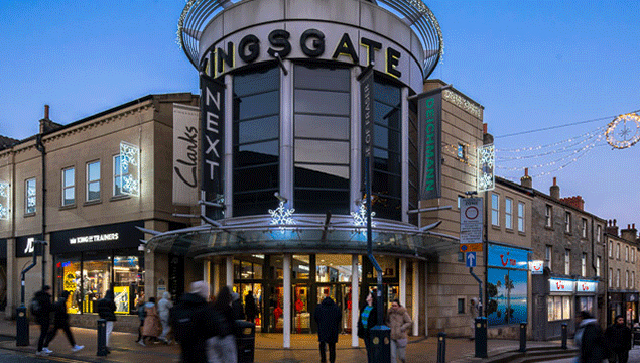Not so much Waterloo Sunset as the scene of many false dawns: the tired neighbourhood of 1950s and 1960s buildings around Britain’s busiest station has seen countless redevelopment plans dissolve in recent years. Once again, Waterloo has two major schemes almost ready to go, offering regeneration of a 10-acre plus area beside the station.
The Shell Centre redevelopment (see box) seems likely to go ahead but its developers have yet to commit to the scheme’s speculative element and, although consent has been granted for an adjacent redevelopment of Elizabeth House, there is no certainty about when – or even if – this will happen.
A decision by communities secretary Eric Pickles in March not to call in the Elizabeth House planning application (see box), praised by CABE but slammed by English Heritage, offered hopes that the Shell Centre would also bypass this hurdle.
Lambeth council is due to decide on the planning application for the Shell Centre later this month.
Although Lambeth has resolved to approve the Elizabeth House scheme, its developers – the Elizabeth House Partnership, a joint venture between Chelsfield and London & Regional – are seeking prelets before commencing work and have still to finalise legal agreements with the council.
None of this lack of development is for want of enthusiasm from Lambeth council, whose supplementary planning guidance for the Waterloo area envisages large-scale regeneration, with several buildings and sites allocated for redevelopment.
While in neighbouring Southwark landmark buildings such as The Shard redefine the skyline around London Bridge station, Lambeth’s ambitions to bring new architecture – and employment – have repeatedly failed. The council has granted numerous consents for office developments over the past decade, including earlier proposals for Elizabeth House and the Shell Centre, but few have come to fruition.
Examples include York House – renamed Wellington Place by Delancey and Scottish Widows – which gained planning permission for around 350,000 sq ft of office space in 2008 and even had Ogilvy & Mather virtually signed up as tenants by 2011. The consent, which Lambeth council admits came with “a raft of conditions”, has not been implemented.
In 2012, Urbanest, along with Delancey and Guys and St Thomas’s Hospital Charity, acquired the York House site and gained consent to redevelop it with student housing. Ogilvy & Mather has now reportedly settled on Archlane’s Sea Containers House, close to Blackfriars Bridge.
Another property that Lambeth had envisaged as an opportunity for an office-based redevelopment was Hercules House, behind the station. It will be occupied by various government departments until the lease expires in September this year. But in January, education provider Oasis won consent to convert the building into a school, despite the fact that it did not yet own the building. In March, receivers sold Hercules House to PPHE Hotel Group, which is expected to convert it into a hotel.
At least 111 Westminster Bridge Road, which had planning consent for a mixed scheme with serviced offices, will remain an office block, although its Irish owner has decided to refurbish the existing building, rather than redevelop.
So why does Waterloo never seem to get its plans off the ground?
Agents and developers are unanimous in lauding the attractions of the area. Waterloo is the busiest station in the UK, serving 88m passengers a year. The area has excellent connections to the City, the West End and Canary Wharf.
The redevelopment of the Royal Festival Hall has proved a big public draw, and the Shell Centre and Elizabeth House face the London Eye. Lambeth has already landscaped Jubilee Gardens, adding a children’s play area, and plans to extend the park into what is now the Hungerford car park (see below).
The problem seems to be that Waterloo lacks an established modern office market, making it very difficult to determine rental levels. Figures from Estates Gazette Research found rents ranging around the mid-£20s per sq ft, with secondhand space exceeding the rents achieved by new space.
“There is a dearth of supply and that creates a general lack of activity, but there is a huge amount of demand for every building that comes up,” says James Couse of Edward Symmons.
When it comes to getting financial backing for schemes around Waterloo, developers have little rental evidence to offer. It is a Catch 22 situation: rents will not rise until developers have created an attractive office environment, but speculative schemes do not look viable unless rental levels improve.
“Any sort of tower would need to get rents that are probably not achievable in that location,” says Jeff Field of Jones Lang LaSalle. “For rents to rise, developers would have to collectively establish an office destination and make it a nice place for people to work.”
There is a chance that the speculative element of the Shell Centre will help to set a new rental level for the area, but the scheme offers only 275,000 sq ft of space, possibly insufficient to convince lenders that a precedent has been set.
Developers Canary Wharf Group and Qatari Diar have not yet committed themselves to building the speculative element alongside the main scheme. “We haven’t taken a final decision, although we are thinking more and more of doing it. We think very highly of the location, so there is a strong case to be made,” says John Pagano, managing director of development at CWG.
Pagano says the consent for the neighbouring Elizabeth House has added impetus to the Shell Centre development, but the decision on whether to build speculatively will not hinge on whether the Chelsfield/L&G scheme goes ahead.
“They may wait for us to start, but we won’t wait for them,” he says.
CWG/Qatari Diar have not fixed a rental target. “We don’t know exactly what rents we would be looking for, but the appeal of the location should drive reasonable rental levels and it will be a state-of-the-art building. It will be at a substantial discount to core West End,” says Pagano.
It may take a commitment to build the speculative office block at the Shell Centre to convince the Elizabeth House Partnership to embark on their redevelopment – and to secure financing, although the Chelsfield/London & Regional jv declined to comment on how the scheme would be funded.
Meanwhile, CWG/Qatari Diar have yet to secure financial backing for the Shell Centre redevelopment. Pagano says the scheme will be financed with a combination of equity funding and senior debt and, while the partners have been in talks with the banks, finance is not yet secured. “The finance isn’t in place because we haven’t secured the planning consent,” says Pagano. “I am very confident that financing isn’t an issue.”
CWG has no preconception about what sort of tenants the building, which will have floorplates of 18,000 sq ft, will attract. Edward Symmons’ Couse says demand for Waterloo is coming from a wide range of occupiers and areas, with strong interest from businesses offering support services to the financial sector.
However, it seems Pagano maybe looking west rather than east: “The Shell Centre development is going to sit very well with the West End market and people are being driven out of the West End by cost.”
Regardless of where they come from, it looks like occupiers hold the key to unlocking Lambeth’s aspirations for Waterloo’s redevelopment.
Shell Centre scheme
What Redevelopment of the 1960s Shell Centre including 500,000 sq ft of offices, 790 residential units and 80,000 sq ft of shops and restaurants. The existing 360 ft Shell tower will be retained and the scheme will contain a further eight buildings, the tallest being 413 ft.
Who Developers Canary Wharf Group and Qatari Diar each spent £150m to acquire a 999-year lease of the site, while the Anglo-Dutch oil company retains the freehold.
When The planning application is due to be heard by Lambeth council this month. A speculative office phase of 275,000 sq ft is planned but the developers have not committed to a start date. Shell’s 1,700 staff will relocate to Canary Wharf to make way for the works, which the developers hope to complete by 2019. Shell will then occupy the existing Shell tower and 210,000 sq ft of new offices at the site.
Elizabeth House, York Road
What Redevelopment of office block designed by Sir David Chipperfield would create two new buildings of 29 storeys and 11 storeys, providing 85,700 sq ft of offices and 142 residential units with shops and cafés at ground level.
Who Elizabeth House Partnership, a joint venture between Chelsfield and London & Regional
When Lambeth council has resolved to approve planning, and communities secretary Eric Pickles has decided not to call in the plans, but legal agreements have yet to be signed between the developer and council. The developer is seeking an office prelet.
Waterloo Development Opportunities
Waterloo Station
The station is due to be upgraded to reuse the international terminal and introduce longer platforms to reduce passenger congestion. Council planners are seeking a new street-level concourse with commercial development to help finance the improvements.
Hungerford car park
Lambeth is seeking conversion of the car park to open green space to extend Jubilee Gardens but would support a development proposal of one third of the car park site. Any development should emulate the “campus-style pattern” of the South Bank.
Union Jack Club/Mercury House
The three towers of the Union Jack Club above a low rise base date from 1976 and create a blank wall to Waterloo Road. To the south, low-rise buildings make poor use of the available space. The council is seeking a development to improve public realm incorporating offices and residential uses with potential for a “landmark” building fronting the station.
Cornwall Road bus garage
The council is seeking to relocate the bus garage. Planning guidelines suggest the site is suitable for residential use with retail and community uses at street level.
Lower Marsh
The area contains a street market, shops and houses. It has potential for development of infill sites and some buildings, including the Waterloo Job Shop and library.
York House and Beckett House
A 2008 planning permission allowed the demolition of York House and construction of a 13-storey tower of offices with retail on the ground floor. Renamed Westminster Place by then owners Delancey and Scottish Widows, the site has now been acquired by student accommodation provider Urbanest and others, who have planning permission for a 19-storey student accommodation block. However, Lambeth has also extended the time limit for the 2008 office-based consent until 2016.











